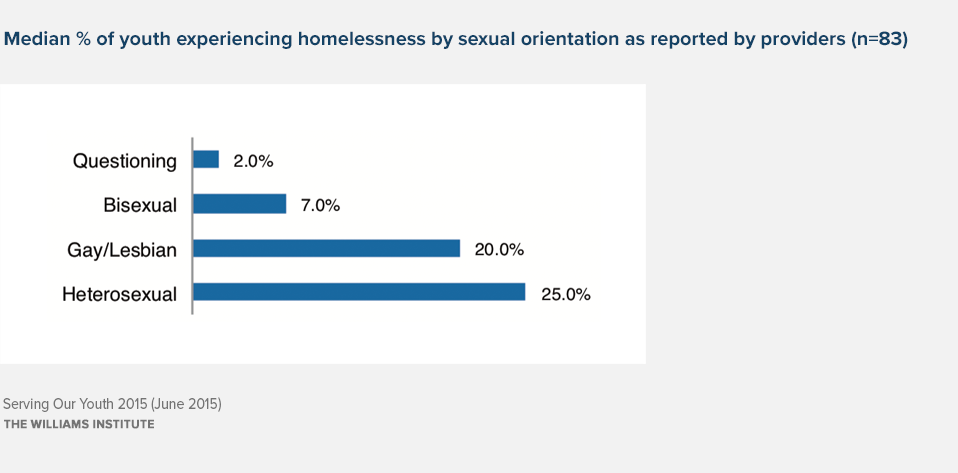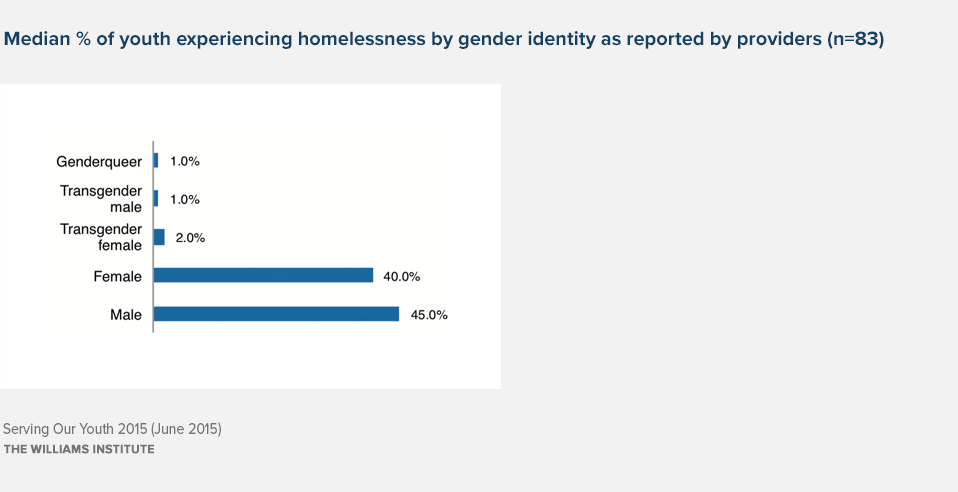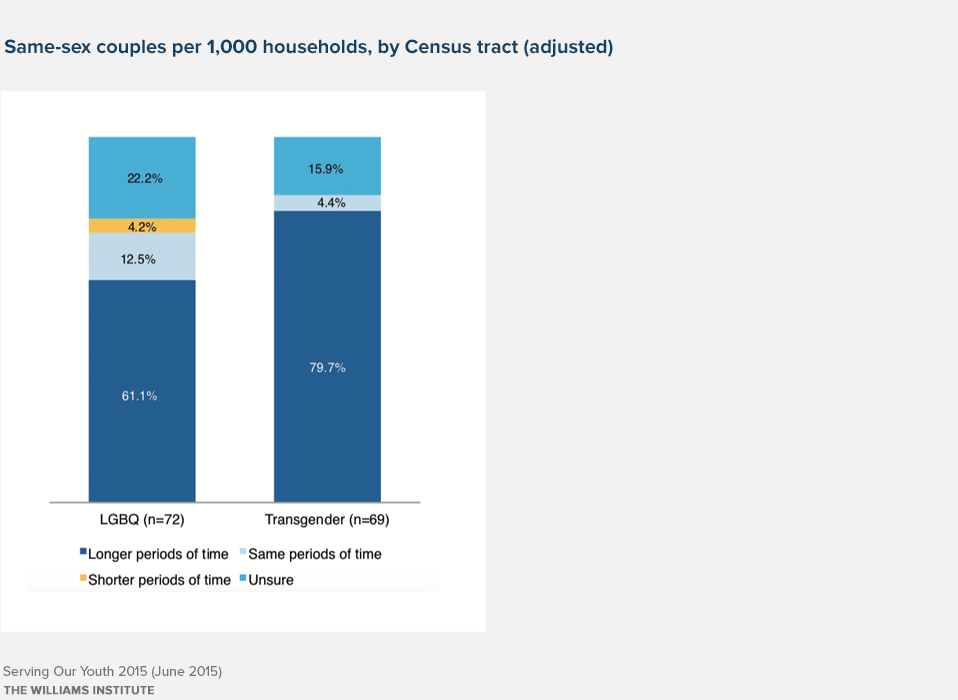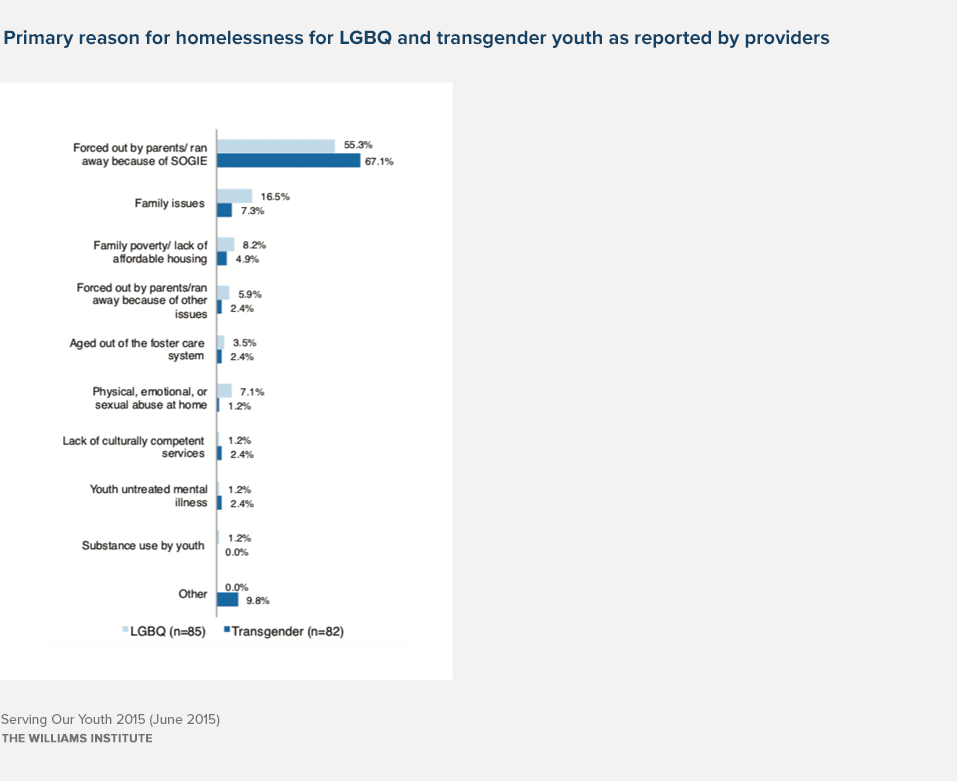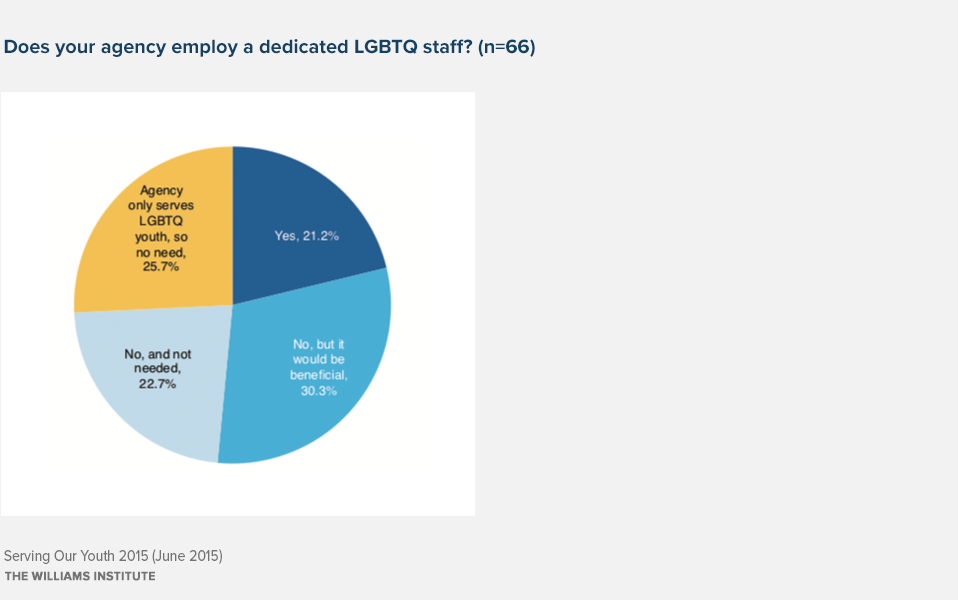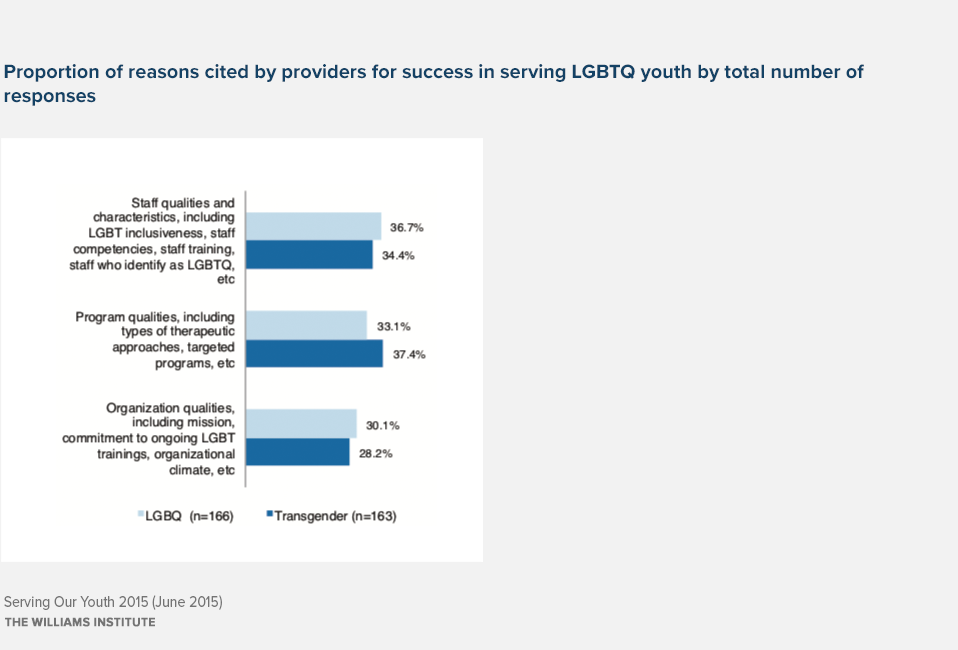Executive Summary
This report summarizes findings from the 2014 LGBTQ Homeless Youth Provider Survey, a survey of 138 youth homelessness human service agency providers conducted from March 2014 through June 2014 designed to better understand homelessness among LGBTQ youth. This report updates a similar report based on a survey conducted in 2011 (Durso & Gates, 2012). This new survey was designed to obtain greater detail on the similar and distinct experiences of sexual minority (lesbian, gay, bisexual, and questioning) and gender minority (transgender) youth experiencing homelessness. Recruitment was focused on agencies whose primary purpose is the provision of services to youth experiencing homelessness.
